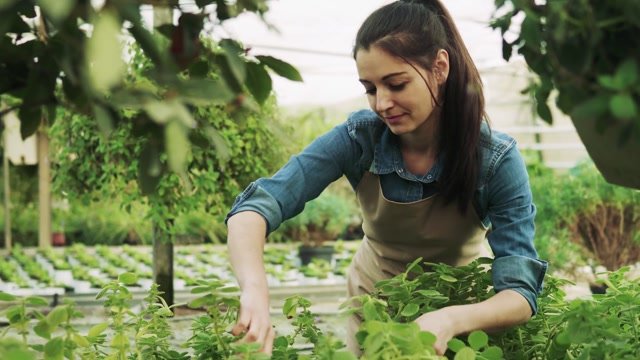Greenhouses and Wellbeing: The Role of Gardening in Mental Health

In recent years, awareness of mental health has grown significantly. People are seeking natural, restorative activities to counter the stresses of modern life, and gardening has proven itself to be one of the most effective. With the controlled and nurturing environment of greenhouses, the benefits extend even further, creating spaces that calm the mind while cultivating life.
This guide explores how greenhouse gardening can become a cornerstone of wellbeing strategies, from individual practices to community mental health initiatives.
Here’s what this article will cover:
| Section | Focus | Key Takeaway |
| The Connection Between Gardening and Mental Health | Why it helps | Physical and emotional benefits |
| Greenhouses as Safe Havens | Controlled spaces | Protection from outside stressors |
| Mindful Gardening Practices | Techniques for calm | Activities to reduce stress |
| Sensory Benefits | Engaging the senses | Stimulation and relaxation combined |
| Community Wellbeing | Group projects | Shared experiences and support |
| Long-Term Resilience | Building mental strength | Routine, stability, and purpose |
| Choosing Structures | Exploring greenhouses for sale | Selecting spaces for wellbeing |
The Connection Between Gardening and Mental Health
The therapeutic benefits of gardening are well-documented. From reducing stress hormones to improving mood, spending time with plants has measurable effects on mental wellbeing. Greenhouses amplify these effects by offering an environment where growth and care are consistent.
In a world where many people spend most of their time indoors or in digital spaces, reconnecting with natural processes is invaluable. Gardening re-establishes bonds with nature while delivering practical benefits to emotional health.
- Stress Reduction: Lower cortisol levels when engaging with plants.
- Physical Activity: Gentle exercise that improves circulation and fitness.
- Emotional Expression: A creative outlet through planting and design.
- Routine and Purpose: Daily care provides structure and motivation.
- Achievement: Watching growth reinforces feelings of success.
Gardening is therefore more than a pastime; it is a holistic approach to wellbeing that benefits both body and mind.
Greenhouses as Safe Havens
Greenhouses offer a unique sense of refuge. Unlike outdoor gardens, they provide shelter from unpredictable weather, pests, and external noise, creating an atmosphere of safety and calm. For many, this controlled space becomes a retreat from daily pressures.
The protective nature of greenhouses enhances their therapeutic effect. They create a private world where individuals can focus solely on nurturing plants.
- Weather Protection: Comfort in all seasons without disruption.
- Quiet Retreat: Separation from traffic and urban stress.
- Enclosure: Psychological comfort in a defined space.
- Consistency: Stable climate reduces unpredictability.
- Privacy: Safe personal space for reflection.
These safe havens allow people to focus inward, fostering mindfulness and reducing external anxieties.
Mindful Gardening Practices in Greenhouses
Mindfulness is about being present, and gardening inside a greenhouse provides countless opportunities to practice it. Activities that require attention to detail, patience, and care naturally encourage a slower pace and deeper focus.
Mindful gardening doesn’t require complex techniques—it is about intentional awareness. Every action, from watering to trimming, becomes part of a meditative process.
- Seed Planting: Observing small actions that lead to growth.
- Watering Rituals: Slow, deliberate care that connects gardener and plant.
- Pruning and Training: Gentle handling of plants to shape growth.
- Breathing Exercises: Pausing to inhale the fresh greenhouse air.
- Journalling Growth: Recording daily observations and reflections.
By integrating mindfulness into greenhouse routines, gardeners strengthen resilience against anxiety and stress.
Sensory Benefits of Greenhouses
Mental health support often relies on engaging the senses. Greenhouses stimulate vision, touch, smell, and even hearing, creating a therapeutic environment that reaches beyond conscious thought.
The sensory richness of plants fosters relaxation while encouraging engagement. It allows individuals to escape from abstract worries and connect with immediate experiences.
- Visual Stimulation: Green foliage and colourful blooms provide calm.
- Tactile Engagement: Soil, leaves, and textures encourage grounding.
- Aromatic Scents: Herbs like lavender and mint relax the nervous system.
- Natural Sounds: Dripping water or rustling leaves soothe the mind.
- Temperature Comfort: Warmth of the greenhouse provides cosiness in cold months.
These sensory benefits make greenhouses particularly suitable for therapeutic programmes.
Community Wellbeing and Greenhouses
When greenhouses are used in group settings, their impact multiplies. Community gardening projects offer participants both the mental benefits of individual gardening and the social benefits of connection.
Shared experiences foster inclusivity and reduce isolation. The greenhouse becomes a gathering point where relationships are built.
- Support Networks: Gardening alongside others provides companionship.
- Shared Learning: Exchanging knowledge builds confidence.
- Collaboration: Group projects encourage teamwork and communication.
- Cultural Exchange: Different traditions enrich planting practices.
- Collective Achievement: Shared harvests bring a sense of unity.
Community greenhouse projects strengthen resilience not only for individuals but for entire groups.
Long-Term Resilience Through Greenhouse Gardening
Mental health is not only about reducing stress but also about building resilience. Greenhouse gardening provides consistent opportunities for engagement, which builds emotional strength and stability over time.
Routines provide predictability in an unpredictable world. Achieving long-term goals through gardening fosters patience and self-belief.
- Daily Habits: Encouraging consistency that supports emotional health.
- Seasonal Planning: Teaching adaptation to changing cycles.
- Problem-Solving: Overcoming challenges like pests builds confidence.
- Life Lessons: Growth, decline, and renewal mirror human experiences.
- Purposeful Living: Gardening creates a sense of contribution and meaning.
These lessons translate into life beyond the greenhouse, offering ongoing tools for mental wellbeing.
Choosing Structures: Exploring Greenhouses for Sale
For individuals or organisations interested in wellbeing projects, exploring greenhouses for sale is an important step. The choice of structure should match the intended therapeutic use, balancing space, accessibility, and durability.
The structure itself becomes part of the therapeutic process. A comfortable, functional greenhouse encourages long-term engagement.
- Compact Models: Suitable for private retreats.
- Accessible Greenhouses: Designed with wide paths and raised beds.
- Durable Frames: Ensuring security and stability in community settings.
- Light-Optimised Designs: Maximising brightness for therapeutic effect.
- Flexible Layouts: Allowing adaptation for different activities.
Selecting the right greenhouse ensures that it remains a positive, welcoming environment for years to come.
Conclusion
Greenhouses combine the beauty of gardening with the strength of mental health support. They are havens of calm, mindfulness, and sensory richness, providing benefits that extend far beyond plant growth. Whether for individuals seeking peace or communities building resilience, they are powerful tools for wellbeing.
Through safe spaces, mindful practices, and inclusive design, greenhouse gardening nurtures both people and plants. It teaches lessons of patience, growth, and renewal, reminding us that caring for nature is also a way of caring for ourselves.

